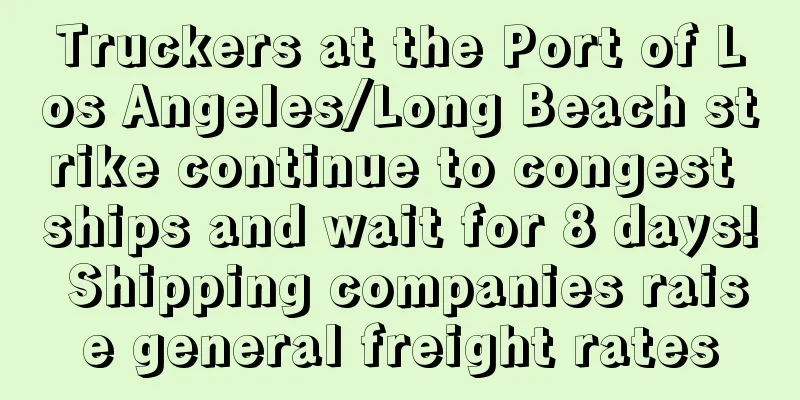Truckers at the Port of Los Angeles/Long Beach strike continue to congest ships and wait for 8 days! Shipping companies raise general freight rates

|
Hapag-Lloyd increases general freight rates from East Asia to the U.S. and Canada USD 960 per all 20' container types USD 1200 per all 40' container types |
<<: Amazon recalls more than 1 million products made in China!
>>: Blood loss! Amazon's "black hand"! Sellers' orders dropped 6 times, FBA shipping costs soared...
Recommend
Advertising Mistakes: 10 Common Mistakes Sellers Make in Advertising
Estimated reading time: 7 minutes I believe that m...
The U.S. Department of Justice seized $12 million worth of counterfeit drugs and pointed the finger at China!
<span data-shimo-docs="[[20,"获悉,据外媒报道,近日美国...
U.S. imports peaked in September! Retailers are ready for the peak season
It is learned that according to the latest monthly...
Amazon FBA sellers in the United States, please take a look! Here is a guide on how to set up and collect sales tax!
As a seller, it is very important to understand A...
Amazon is cracking down on variant abuse! Are compliant products also being abused?!
Let’s start today’s main text. ◆ ◆ ◆ ◆ Recently, t...
What is Prime Day Exclusive? Prime Day Exclusive Review
Prime Day Exclusive is a new event launched by Ama...
Insights into U.S. Easter consumer trends! Amazon is the preferred online retailer
It is learned that on April 7, data company Numera...
Amazon choice's advanced path
With the adjustment of Amazon's algorithm, Ama...
What is 91Exit? 91Exit Review
91chukou.com is affiliated to Shanghai Dianxing In...
The best Valentine's Day strategy to help you get your first pot of gold in the new year! (Data/Keywords/Product Selection)
There is less than a week left until Valentine'...
What is Piseer? Piseer Review
Piseer is a cross-border export e-commerce data an...
Sellers, please note! This country has declared "national bankruptcy", and customers in this country: No need to pay back the money
On January 10, local time, Brazilian President Jai...
What is DesignMantic? DesignMantic Review
DesignMantic provides users with a design tool wit...
The new features of Sponsored Brands ads, a new boon for brand sellers?
Sellers who have been selling on Amazon for a whil...
More than 50 countries have grounded flights to the UK, paralyzed logistics! A large number of Amazon stores have been banned from selling!
The new strain of the coronavirus in the UK has ca...









